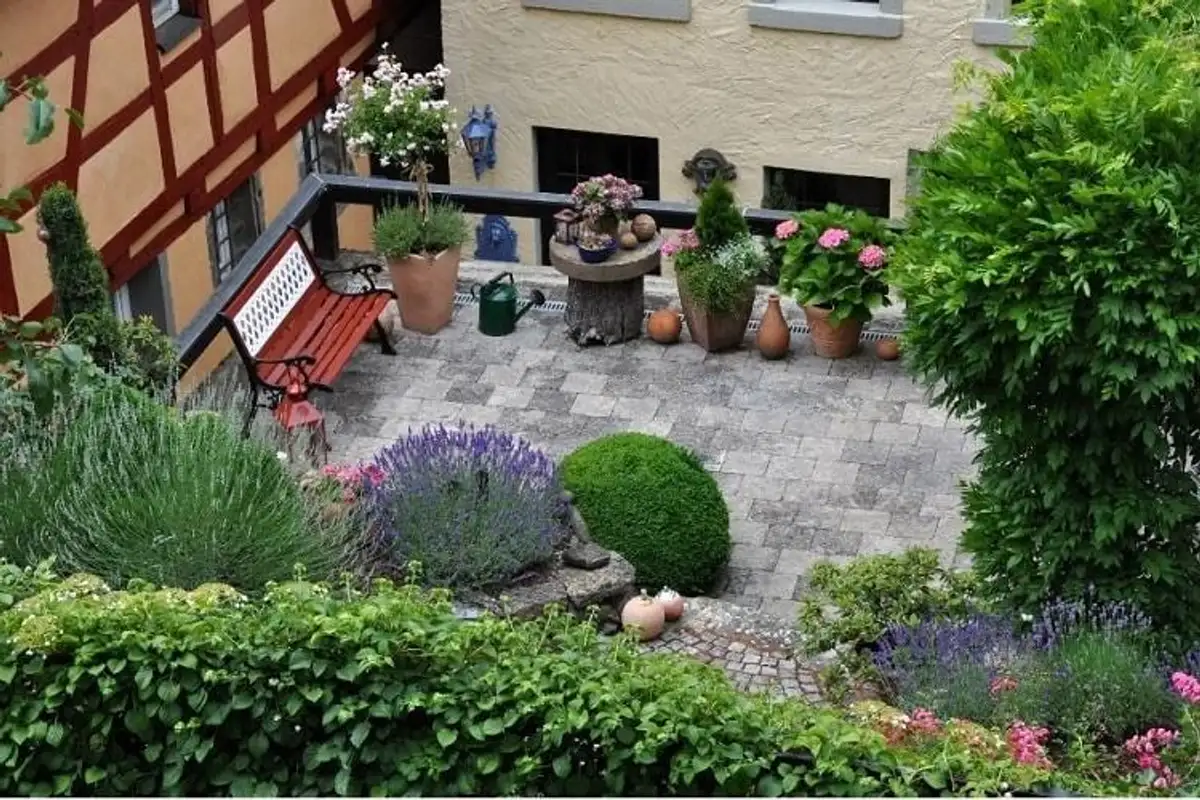Interested in creating your own rooftop garden? A rooftop garden is a vegetal space created on a flat roof, providing numerous benefits in the heart of the city. But how do you go about creating one? What are the best plants to cultivate in a rooftop garden? In this article, we will explore the answers to these questions and provide a step-by-step guide to help you create your own rooftop garden.
What is a Rooftop Garden?
A rooftop garden consists of ornamental or vegetable plants grown in pots and planters on the terrace-roof of a building. It is important to note that a rooftop garden should not be confused with a green roof, where the slopes are directly covered with moss. The design of a rooftop garden can range from simple to complex, depending on your preferences, and can include anything from a few plants in clay pots to raised vegetable beds equipped with automatic watering systems.
Choosing the Right Plants
When it comes to selecting plants for a rooftop garden, it is essential to consider the weather conditions that rooftops often experience. Some roofs are exposed to direct sunlight, while others may be shaded by neighboring buildings. Additionally, rooftops are often more exposed to wind compared to ground-level gardens. Here are some plant options for different conditions:
Drought-Tolerant Plants
Drought-tolerant plants are an excellent choice for a rooftop garden, as watering can be a challenge in such an inaccessible location. Consider plants such as succulents, sage, lavender, evergreen shrubs, sedum, echinacea, potted olive trees, beets, and desert roses that can withstand dry conditions. Installing a drip irrigation system or a rainwater collector can also help with watering.
Plants for Shaded Rooftops
If your rooftop terrace is shaded for most of the day, opt for shade-tolerant plants such as hostas, parsley, and lettuce. These plants thrive in environments with reduced sunlight and will be a great addition to your rooftop garden.
Plants for Full Sun Exposure
If your rooftop receives at least six hours of direct sunlight per day, choose full-sun plants such as rudbeckias, marigolds, olives, dwarf Japanese maples, tomatoes, and strawberries. These plants will thrive in the abundant sunlight and add vibrancy to your rooftop garden.
Wind-Tolerant Plants
Rooftop gardens often experience stronger air currents than ground-level gardens. Therefore, it is essential to select plants that can tolerate windy conditions. Consider low shrubs, ground covers, ornamental grasses, hydrangeas, and honeysuckle, among others, that can withstand the wind and still flourish in your rooftop garden.
Creating a Rooftop Garden: Step by Step
Now that you have an idea of the plants suitable for your rooftop garden, it's time to dive into the process of creating one. Follow these steps to ensure a safe and successful rooftop garden:
Step 1: Check Municipal Safety Regulations
Before starting your rooftop garden project, check the municipal safety regulations regarding rooftop gardens. Consult with an architect or a structural engineer to confirm that your rooftop terrace can support the additional weight of the containers, plants, soil, and water without causing any damage to the structure of the building. Additionally, ensure you have the necessary agreements from the co-owners and potential roommates of the building.
Step 2: Select Plants and Containers
Select the plants that you want to grow in your rooftop garden. Consider the conditions of your rooftop, such as sunlight exposure and wind, and choose plants accordingly. Additionally, choose containers that are appropriate for your selected plants. Ensure that the pots are large enough to accommodate the root system of the plants and have drainage holes. Opt for lightweight materials like plastic, metal, or wood over heavier materials like concrete, ceramic, or natural stone.
Step 3: Install a Windbreak
If your rooftop experiences frequent gusts of wind, consider installing a windbreak to protect your plants. A windbreak can be in the form of a fence or screens that help reduce the impact of strong winds on your rooftop garden.
Step 4: Prepare the Soil
Ensure you have the right soil for your plants. Most plants thrive in well-drained soil rich in organic matter. Consider using compost-amended potting soil. Prepare the soil by filling the containers with the appropriate soil mixture for your plants.
Step 5: Plant and Water
Plant your selected species in the designated containers. Be sure to water them generously after planting. Monitor their watering needs regularly and provide sufficient water to keep them healthy and thriving.
Creating a rooftop garden can be a rewarding and fulfilling experience. With the right plants, containers, and proper care, you can transform your rooftop into a vibrant and green space. Take the time to plan and consider the conditions of your rooftop, and soon you'll be enjoying the beauty and benefits of your own rooftop garden.
Hello, I'm Olivia, a proud member of The Daily Herald team. As a passionate writer, I enjoy sharing captivating stories that bring a touch of elegance to our readers' lives. In fact, one time while working on an article about fashion trends, I stumbled upon a hidden gem boutique that ended up becoming a favorite among our loyal followers. It's moments like these that make my job truly rewarding and inspire me to keep uncovering the best lifestyle secrets for our readers.

